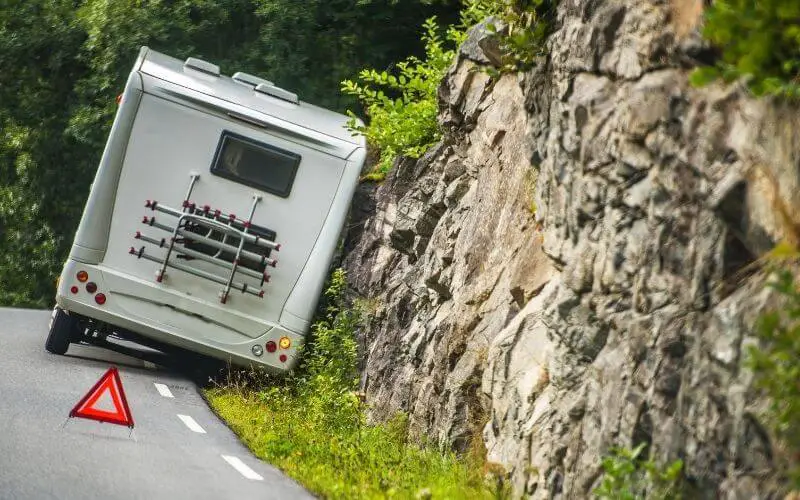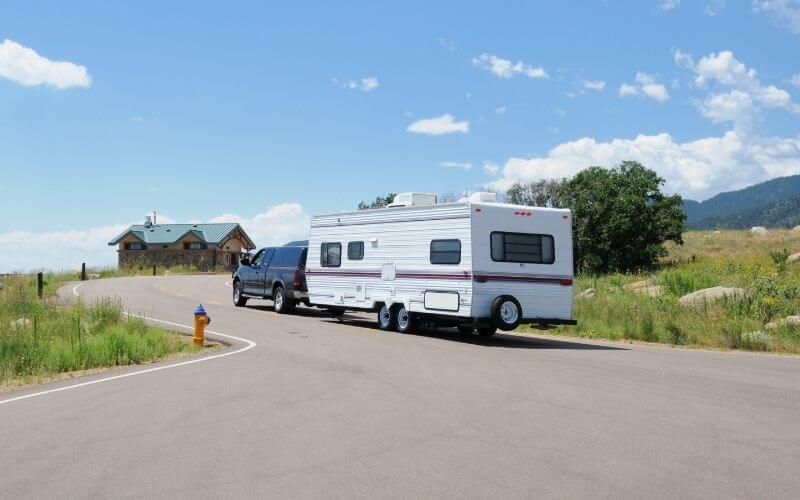Published Date: July 31, 2021
Last Updated on December 24, 2022 by Camper Front
Should you tow at maximum capacity? NO, it’s never advisable to tow at maximum capacity as there are risks involved,
Basically, the general rule of thumb when it comes to towing is, “it is not ideal to tow at the very top of your vehicle’s weight capacity as this will further strain the vehicle’s suspension and components wear life.”
Towing doesn’t have to be rocket science, neither is it one that requires guesswork or much estimation. So just I’m going to put you off your miseries telling you precisely what you need to know.
Why Does My Travel Trailer Sway so Much?

I choose to bring this up because trailer sway is something you’re likely to experience when vacationing.
You should know a little encounter with sway on the highway can quickly put a damper on your vacation and make you think about dumping the rig in the garage or up for sale.
It’s true! Even the most experienced drivers that are ignorant of the tips I’m about to share with you have lost control of their towed trailers with disastrous results.
But there’s absolutely nothing to be afraid of, the tips here will help you understand what causes trailer sway, as well as help you keep your RV upright.
But before that, what is trailer sway?
It’s a side-to-side motion that begins when you reach a certain speed while towing a trailer. And a continuous side-to-side swaying motion is not normal and could lead to whipping if speed increases.
Whipping, however, is an increasingly violent and uncontrollable sway often caused by loading the trailer heavier in the rear.
To prevent trailer sway or whipping, you heed the following:
Properly load the front half of the trailer box with 60% of the cargo weight.
Secondly, do not exceed your trailer’s maximum gross weight or overload your tow vehicle – we’ve talked about this a thousand times.
Thirdly, NEVER load cargo on the outside of the trailer. And you should never allow them to extend out the rear of your trailer.
And finally, once you’re on the road, try to maintain a speed of 55 miles per hour or less, as sway or whipping is more likely to occur at higher speeds.
What if I noticed swaying on my way?
Well, if you notice sway at its earliest stage, immediately let off the gas pedal to reduce your speed.
You should slow down to and maintain a speed of at least 10 miles per hour below the speed the sway or whipping first occurred.
WARNING!
Do not apply your brakes or speed up.
Also, you want to hold your steering wheel straight up as soon as possible. Slow down, stop and reload your trailer with the heavier portion of your cargo in the front.
Conclusion | Should You Tow at Maximum Capacity?
In conclusion, I urge you to strictly follow all we’ve said here – both the tips as to whether should you tow at maximum capacity or not, as well as the tricks for avoiding trailer sway.
Aside from that, if you’re using a chevy 1500 to pull or a Ram 1500 I highly recommend you go check out these articles:
What size camper can a chevy 1500 pull and how big of a camper can a Ram 1500 pull. And come back to the comment section to thank me.
Recommended Readings:

